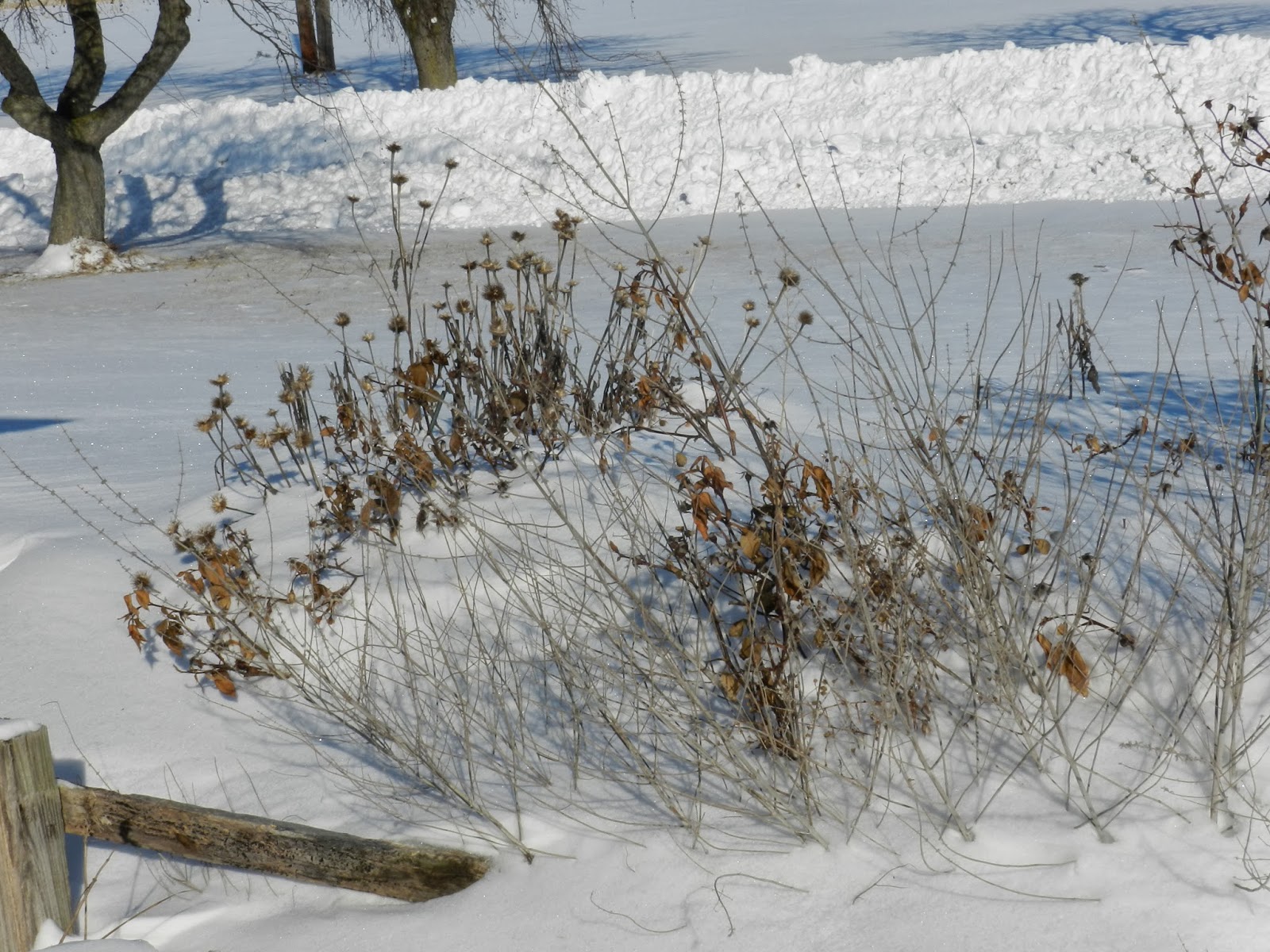 | |
| From Jan. 21 to Feb. 4 to Feb. 14 |
My Kalanchoe has a few tiny blooms, and my Christmas cactus is budding up again. But what I'm really interested in this week is not indoors, but outside:
This weekend is the Great Backyard Bird Count, a project sponsored each February by the Cornell Lab of Ornithology and the National Audubon Society to collect data on wild birds across the world. With the snow cover we've had this winter, there has been no shortage of birds to count in my yard.
You don't have to be a birding expert to participate: the website has links to sites for bird i.d. help, including the one at Cornell, which is excellent. I certainly don't know much about birds, but I have no trouble recognizing our state bird and my personal favorite, the cardinal, who has been a frequent visitor at the feeders.
Nor do I have any trouble recognizing the less flamboyant, but just as lovely, female cardinal. But what is that little bird to her left? When I'm not sure, I turn to my well-worn copy of Birds of Illinois Field Guide by Stan Tekiela. Flipping through the pages, I'm pretty sure this is a goldfinch. Not long ago, I discovered that the goldfinch, so easy to spot by its bright yellow body in the summer, turns to a dull brown in the winter.
A frequent visitor here every winter is the Downy Woodpecker, who particularly enjoys the suet feeders. I've learned that little red spot on his head means he's a male, which means I have at least a pair here, because I've also seen one without the red spot, a female. The most common bird I've seen is the dark-eyed Junco, including the one perched atop the feeder here.There are so many of them, usually foraging on the ground, that I'm not sure--did I count that one already??
A less common sight is the Red-bellied Woodpecker. I took this photo a week ago, so unless I see him again this weekend, unfortunately, he won't make the count.
You don't even have to step outside to participate in the GBBC, if you don't want to. All the photos here were taken through my large living room window (badly in need of cleaning, I might add). To make viewing from indoors even easier, I added a new feeder this year that attaches to the window with suction cups to replace an old one that broke. The only problem I've found with this feeder is that it doesn't have much of a perch, so the larger birds have trouble using it. But maybe that's a good thing--it's been popular with the small birds, like this Tufted Titmouse. Look at those little feet!
The small birds like the Titmouse and the Chickadees aren't the only ones who appreciate this feeder. Toby and the rest of the furry inhabitants of our household have been enjoying the close-up version of bird television, too.
Watching the birds at the feeders makes counting easier, but I also survey the trees for any others too shy to come closer. Oops, I don't think this guy is going to make the count:)
Refilling the bird feeders has become a daily routine this winter--lots of hungry birds in this cold! The Bluejays may have a reputation of being bullies, but I think they're beautiful, and I'll keep putting out more food to keep them and everyone else accomodated.
The Great Backyard Bird Count runs through this Monday, February 17, so you still have time to participate, if you wish. You can spend as much time as you want counting birds over the weekend or as little as 15 minutes. All the information collected will help scientists determine what is happening with bird populations. It's a great activity to share with kids, too, as I've done in the past with my grandkids. And in case any of you think I have digressed from the original topic here, I leave you with this image of a White-breasted Nuthatch--a photo of a bird and some blooms.
To see more of what's in bloom around the world, visit our hostess Carol at May Dreams Gardens, who always has something to share even if her garden is also covered in snow.













